 The Baptist Generals, whose very name hints at a collared intensity,have produced an album that pulls at that restraint until it snaps. 'NoSilver, No Gold' is haunted, clearly. On the first track, theyintroduce the mind that shapes this album. "Ay Distress" begins as asimple, weary sounding dirge. This lasts for three minutes into thesong, when someone's cell phone begins to ring in the studio, andsinger Chris Flemmons explodes into a fury, throwing his acousticguitar down and screaming "Goddamn it, Oh God. Fuck!" as those aroundhim try to calm him down. Indeed this is a man who is serious about hismusical expression. This volitility serves as an unsettlingundercurrent throughout the album. 'No Silver, No Gold' creaks andgroans like a dusty, rundown shack swaying on its foundation. It's thisprecariousness that demands attention, that at any moment it willcollapse and spill out its insides. Flemmons' approach to his guitar isnot one of melodic delicacy but percussive attack, raw and rough. Stll,many of the songs manage to feel delicate with obtuse lyrics that hintat deeper pain and emotion. "Give me your hands / I don't need yourmind now," he pleads on "Preservatine," "I need your hands / engaged inthe construction of a special place / we can hold onto the light."Flemmons' often rambling delivery adds to the unhinged feeling of thealbum. There are moments of poignant confession, "Diminished," alongside uncomfortable leching like "Creeper," where the singer comes offas an unwanted, drunken advance. You can't help but be creeped out byhis assurance, "Give me your number / I'll come around." The mostovertly volatile song is "Burning," where Flemmons scathingly accuses"You want love, do you? You call it love / It's a murder / It's atheft." 'No Silver, No Gold' reads like the diary of a broken soul,cathartic, a fascinating look into the mind of someone dealing with hisown haunting.
The Baptist Generals, whose very name hints at a collared intensity,have produced an album that pulls at that restraint until it snaps. 'NoSilver, No Gold' is haunted, clearly. On the first track, theyintroduce the mind that shapes this album. "Ay Distress" begins as asimple, weary sounding dirge. This lasts for three minutes into thesong, when someone's cell phone begins to ring in the studio, andsinger Chris Flemmons explodes into a fury, throwing his acousticguitar down and screaming "Goddamn it, Oh God. Fuck!" as those aroundhim try to calm him down. Indeed this is a man who is serious about hismusical expression. This volitility serves as an unsettlingundercurrent throughout the album. 'No Silver, No Gold' creaks andgroans like a dusty, rundown shack swaying on its foundation. It's thisprecariousness that demands attention, that at any moment it willcollapse and spill out its insides. Flemmons' approach to his guitar isnot one of melodic delicacy but percussive attack, raw and rough. Stll,many of the songs manage to feel delicate with obtuse lyrics that hintat deeper pain and emotion. "Give me your hands / I don't need yourmind now," he pleads on "Preservatine," "I need your hands / engaged inthe construction of a special place / we can hold onto the light."Flemmons' often rambling delivery adds to the unhinged feeling of thealbum. There are moments of poignant confession, "Diminished," alongside uncomfortable leching like "Creeper," where the singer comes offas an unwanted, drunken advance. You can't help but be creeped out byhis assurance, "Give me your number / I'll come around." The mostovertly volatile song is "Burning," where Flemmons scathingly accuses"You want love, do you? You call it love / It's a murder / It's atheft." 'No Silver, No Gold' reads like the diary of a broken soul,cathartic, a fascinating look into the mind of someone dealing with hisown haunting.  The Baptist Generals, whose very name hints at a collared intensity,have produced an album that pulls at that restraint until it snaps. 'NoSilver, No Gold' is haunted, clearly. On the first track, theyintroduce the mind that shapes this album. "Ay Distress" begins as asimple, weary sounding dirge. This lasts for three minutes into thesong, when someone's cell phone begins to ring in the studio, andsinger Chris Flemmons explodes into a fury, throwing his acousticguitar down and screaming "Goddamn it, Oh God. Fuck!" as those aroundhim try to calm him down. Indeed this is a man who is serious about hismusical expression. This volitility serves as an unsettlingundercurrent throughout the album. 'No Silver, No Gold' creaks andgroans like a dusty, rundown shack swaying on its foundation. It's thisprecariousness that demands attention, that at any moment it willcollapse and spill out its insides. Flemmons' approach to his guitar isnot one of melodic delicacy but percussive attack, raw and rough. Stll,many of the songs manage to feel delicate with obtuse lyrics that hintat deeper pain and emotion. "Give me your hands / I don't need yourmind now," he pleads on "Preservatine," "I need your hands / engaged inthe construction of a special place / we can hold onto the light."Flemmons' often rambling delivery adds to the unhinged feeling of thealbum. There are moments of poignant confession, "Diminished," alongside uncomfortable leching like "Creeper," where the singer comes offas an unwanted, drunken advance. You can't help but be creeped out byhis assurance, "Give me your number / I'll come around." The mostovertly volatile song is "Burning," where Flemmons scathingly accuses"You want love, do you? You call it love / It's a murder / It's atheft." 'No Silver, No Gold' reads like the diary of a broken soul,cathartic, a fascinating look into the mind of someone dealing with hisown haunting.
The Baptist Generals, whose very name hints at a collared intensity,have produced an album that pulls at that restraint until it snaps. 'NoSilver, No Gold' is haunted, clearly. On the first track, theyintroduce the mind that shapes this album. "Ay Distress" begins as asimple, weary sounding dirge. This lasts for three minutes into thesong, when someone's cell phone begins to ring in the studio, andsinger Chris Flemmons explodes into a fury, throwing his acousticguitar down and screaming "Goddamn it, Oh God. Fuck!" as those aroundhim try to calm him down. Indeed this is a man who is serious about hismusical expression. This volitility serves as an unsettlingundercurrent throughout the album. 'No Silver, No Gold' creaks andgroans like a dusty, rundown shack swaying on its foundation. It's thisprecariousness that demands attention, that at any moment it willcollapse and spill out its insides. Flemmons' approach to his guitar isnot one of melodic delicacy but percussive attack, raw and rough. Stll,many of the songs manage to feel delicate with obtuse lyrics that hintat deeper pain and emotion. "Give me your hands / I don't need yourmind now," he pleads on "Preservatine," "I need your hands / engaged inthe construction of a special place / we can hold onto the light."Flemmons' often rambling delivery adds to the unhinged feeling of thealbum. There are moments of poignant confession, "Diminished," alongside uncomfortable leching like "Creeper," where the singer comes offas an unwanted, drunken advance. You can't help but be creeped out byhis assurance, "Give me your number / I'll come around." The mostovertly volatile song is "Burning," where Flemmons scathingly accuses"You want love, do you? You call it love / It's a murder / It's atheft." 'No Silver, No Gold' reads like the diary of a broken soul,cathartic, a fascinating look into the mind of someone dealing with hisown haunting.  The Galaktica agent of the multi-faceted, many-membered Origami artcollective is one Benny Braaten. You might have encountered him latelast year opening for the Legendary Pink Dots on their North Americantour. There, he ensconced those smart enough to show up early in dronesand ambiance and manically bowed bass guitar strings. At themerchandise table were flyers advertising this forthcoming 7". Soonafter the tour I sent off $7 to Norway and about two months later therecord (one of 500) arrived. There are two versions of the title track,recorded in Canada and Norway respectively. Version I offers a slow,breathy drone that rises and falls at times into near silence,glass-like chimes gently touching in the distance. The latter half ofthe track gains new layers of warmth and the twinkles gain friction.Version II is more ominous with a sustained, darker hued hum as subtletrombone notes effectively add to the aura. It's nice, soothing stuff,but with both tracks clocking in at just under five minutes, it reallyleaves you wanting for more, such as the stunning 'Stjernevandring /Eesti Lilled Silmad Süda' double CD from Norway's Jester Records. Thedigital format certainly allows Origami Galaktika's music the mammothtrack times it deserves.
The Galaktica agent of the multi-faceted, many-membered Origami artcollective is one Benny Braaten. You might have encountered him latelast year opening for the Legendary Pink Dots on their North Americantour. There, he ensconced those smart enough to show up early in dronesand ambiance and manically bowed bass guitar strings. At themerchandise table were flyers advertising this forthcoming 7". Soonafter the tour I sent off $7 to Norway and about two months later therecord (one of 500) arrived. There are two versions of the title track,recorded in Canada and Norway respectively. Version I offers a slow,breathy drone that rises and falls at times into near silence,glass-like chimes gently touching in the distance. The latter half ofthe track gains new layers of warmth and the twinkles gain friction.Version II is more ominous with a sustained, darker hued hum as subtletrombone notes effectively add to the aura. It's nice, soothing stuff,but with both tracks clocking in at just under five minutes, it reallyleaves you wanting for more, such as the stunning 'Stjernevandring /Eesti Lilled Silmad Süda' double CD from Norway's Jester Records. Thedigital format certainly allows Origami Galaktika's music the mammothtrack times it deserves.The LTM label seems to have dedicated itself to reissuing work byFactory Records bands of the early 1980s who never quite became thenext New Order, Joy Division, or Happy Mondays. So far, they haveheroically compiled full CDs for bands who might only have had only one7" on Factory, or whose work might have been overshadowed by thedominating mythos of that label or of producer Martin Hannett. Lately,LTM has exhumed a band who were one of Factory's strangest signings, aDutch trio called Minny Pops. These two CDs comprise the group's secondLP, 'Sparks in a Dark Room' (here coupled with contemporaneous 7" anddemo material) and 'Secret Stories,' which is a collection of more 7"singles, demos, and excerpts from their third and fourth albums.
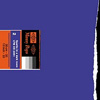 The question now is, since collectors have been clammoring for theserecords for so long, have they actually been worth the wait? I'd sayso, but with some reservation. Minny Pops' yet-to-be-reissued debutalbum, "Drastic Measures, Drastic Movements" from 1979, was a bizarremix of noise, new wave, synth pop, and Yello-like cabaret goofiness. Itis one of the most genuinely tweaked documents of DIY electro-pop, arecord which to this day causes heads to be scratched in satisfyingbewilderment. As the group's members aquired careers as record labelexecutives (at Boudisque, Play it Again Sam, etc), the music that theyproduced became more accessible, the noise nearly vanished, andrecognizable industrial-funk genre trappings emerged. If you're awareof the music happening in Belgium in the early 1980s (particularlySiglo XX, the Neon Judgement, and A Blaze Colour) then the gloomymonotone grooves of 'Sparks in a Dark Room' will immediately soundfamiliar. But there's something different here; on 'Sparks,' thereexists an implacable note of self-awareness and humor which seperatesthe album from those by other practitioners of the style. Tunes like "AFeeling" and "Night Visit" are perversely catchy, with lyrics that tendtoward self-effacing. I like that. The humor, however subtle, offsetsthe otherwise overbearing gloom.
The question now is, since collectors have been clammoring for theserecords for so long, have they actually been worth the wait? I'd sayso, but with some reservation. Minny Pops' yet-to-be-reissued debutalbum, "Drastic Measures, Drastic Movements" from 1979, was a bizarremix of noise, new wave, synth pop, and Yello-like cabaret goofiness. Itis one of the most genuinely tweaked documents of DIY electro-pop, arecord which to this day causes heads to be scratched in satisfyingbewilderment. As the group's members aquired careers as record labelexecutives (at Boudisque, Play it Again Sam, etc), the music that theyproduced became more accessible, the noise nearly vanished, andrecognizable industrial-funk genre trappings emerged. If you're awareof the music happening in Belgium in the early 1980s (particularlySiglo XX, the Neon Judgement, and A Blaze Colour) then the gloomymonotone grooves of 'Sparks in a Dark Room' will immediately soundfamiliar. But there's something different here; on 'Sparks,' thereexists an implacable note of self-awareness and humor which seperatesthe album from those by other practitioners of the style. Tunes like "AFeeling" and "Night Visit" are perversely catchy, with lyrics that tendtoward self-effacing. I like that. The humor, however subtle, offsetsthe otherwise overbearing gloom. 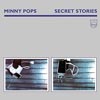 The "Secret Stories" compilation is problematic, though I am glad thatit exists. In other words, if tracks from the band's 1985 reunion LP,'4th Floor,' and their 1983 soundtrack to 'Poste Restante' were notreissued in some form, there would always be someone crying "Whydoesn't someone reissue those other two Minny Pops records I can'tfind?". The tracks from both of these albums, which make up the discs'ssecond half, recall some of Tuxedomoon's post-Ralph schmaltz, with thehumor replaced by opaque melodrama. My curiosity about these longout-of-print LPs is now satisfied, but I don't particularly want tohear the music again. Perhaps that's why the albums were not reissuedin their entirety (a smart move on LTM's part). However, what's greatabout "Secret Stories" are the 7" tracks that make up the disc's firsthalf, including the classic "Dolphin's Spurt" (a different version thanthe one on 'Drastic Measures'), and several wonderfully rough 1981demos. These show the band at their best, a balance of bizarreelectro-funk and edgy industrial disco. The comparison to early Yelloisn't so far off (and, though I don't really want to validate thevenomous English journalists of 1980 who sought to destroy Factorybands by comparing them all to Joy Division... well, with these 7"s,the comparison is tough not to notice), but Minny Pops were more subtleand much darker. With hindsight, it's easy to imagine which other bandsmight have listened to these records before starting bands of their own(especially the Neon Judgement), adding more bombast to the grooves.Listening to both CDs makes me yearn for the profound oddness thatmarked 'Drastic Measures, Drastic Movements,'which is simply notpresent here.
The "Secret Stories" compilation is problematic, though I am glad thatit exists. In other words, if tracks from the band's 1985 reunion LP,'4th Floor,' and their 1983 soundtrack to 'Poste Restante' were notreissued in some form, there would always be someone crying "Whydoesn't someone reissue those other two Minny Pops records I can'tfind?". The tracks from both of these albums, which make up the discs'ssecond half, recall some of Tuxedomoon's post-Ralph schmaltz, with thehumor replaced by opaque melodrama. My curiosity about these longout-of-print LPs is now satisfied, but I don't particularly want tohear the music again. Perhaps that's why the albums were not reissuedin their entirety (a smart move on LTM's part). However, what's greatabout "Secret Stories" are the 7" tracks that make up the disc's firsthalf, including the classic "Dolphin's Spurt" (a different version thanthe one on 'Drastic Measures'), and several wonderfully rough 1981demos. These show the band at their best, a balance of bizarreelectro-funk and edgy industrial disco. The comparison to early Yelloisn't so far off (and, though I don't really want to validate thevenomous English journalists of 1980 who sought to destroy Factorybands by comparing them all to Joy Division... well, with these 7"s,the comparison is tough not to notice), but Minny Pops were more subtleand much darker. With hindsight, it's easy to imagine which other bandsmight have listened to these records before starting bands of their own(especially the Neon Judgement), adding more bombast to the grooves.Listening to both CDs makes me yearn for the profound oddness thatmarked 'Drastic Measures, Drastic Movements,'which is simply notpresent here.  While several Current Ninety Three live outings have been recorded andin due time released, Antony and the Johnsons five years ofperformances have not seen the same light of day. Perhaps that and the(at the time) upcoming Antony/C93 shows in Portugal and San Franciscowere reasons for Durtro to present this EP length disc featuring threetracks apiece from last April's shows. Antony is at the piano,accompanied by Johnson Maxim Moston on violin. "You Stand Above Me" isonly one minute and thirty-six seconds but contains all the melancholyand drama one would expect. Antony bellows "while eternity cycleswildly, inside me," over plaintive piano notes, the vibrato of hispowerful soprano nestling into every crevice of my mind, body and soul.Antony naturally adapts Edgar Allan Poe's lovely 1827 poem "The Lake"to song, a much more fitting tribute than Lou Reed's ill-advised 'TheRaven' (excepting Antony's minimal rendition of Reed's "Perfect Day").What follows is the tender "Cripple and the Starfish," and what soundslike a well deserved standing ovation. For C93's songs, David Tibet isaccompanied by usual suspects Maja Elliott on piano and MichaelCashmore on guitar. "Walking Like Shadow," from C93 and Nurse WithWound's 'Bright Yellow Moon' is musically true. Ditto the brief versionof "Judas as Black Moth" from 'Soft Black Stars' which also benefitsfrom additional lyrics, "in the middle of the night as the cats cry inthe street, and the scent of flowers is heavy in your hair, the carsweeps by with a murdered child, the car sweeps by with a violatedgirl". The mammoth title track from 'Sleep Has His House' is reduced tojust the main lyrical passage here, the piano and Tibet's voice risingto a fever pitch as he breathlessly chokes on emotion in remembrance ofhis father. It is magnificent. Too bad there's only three songs each.I'd happily pay more for more. Maybe, just maybe, a future show willcome closer to me than 1300 miles away.
While several Current Ninety Three live outings have been recorded andin due time released, Antony and the Johnsons five years ofperformances have not seen the same light of day. Perhaps that and the(at the time) upcoming Antony/C93 shows in Portugal and San Franciscowere reasons for Durtro to present this EP length disc featuring threetracks apiece from last April's shows. Antony is at the piano,accompanied by Johnson Maxim Moston on violin. "You Stand Above Me" isonly one minute and thirty-six seconds but contains all the melancholyand drama one would expect. Antony bellows "while eternity cycleswildly, inside me," over plaintive piano notes, the vibrato of hispowerful soprano nestling into every crevice of my mind, body and soul.Antony naturally adapts Edgar Allan Poe's lovely 1827 poem "The Lake"to song, a much more fitting tribute than Lou Reed's ill-advised 'TheRaven' (excepting Antony's minimal rendition of Reed's "Perfect Day").What follows is the tender "Cripple and the Starfish," and what soundslike a well deserved standing ovation. For C93's songs, David Tibet isaccompanied by usual suspects Maja Elliott on piano and MichaelCashmore on guitar. "Walking Like Shadow," from C93 and Nurse WithWound's 'Bright Yellow Moon' is musically true. Ditto the brief versionof "Judas as Black Moth" from 'Soft Black Stars' which also benefitsfrom additional lyrics, "in the middle of the night as the cats cry inthe street, and the scent of flowers is heavy in your hair, the carsweeps by with a murdered child, the car sweeps by with a violatedgirl". The mammoth title track from 'Sleep Has His House' is reduced tojust the main lyrical passage here, the piano and Tibet's voice risingto a fever pitch as he breathlessly chokes on emotion in remembrance ofhis father. It is magnificent. Too bad there's only three songs each.I'd happily pay more for more. Maybe, just maybe, a future show willcome closer to me than 1300 miles away. - Antony - The Lake
- Antony - You Stand Above Me
- Current 93 - Sleep Has His House
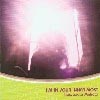 When Acid Mothers Temple played at last year's Terrastock festival,they performed a 45-minute set that completely galvanized the exhaustedcrowd. Having listened to the band's records for years, I was awestruckto be in the physical presence of the band's leader and guru, KawabataMakoto. Here was a man that I had was sure would be a gargantuan,superhuman presence. I was surprised to see that he was an unassuming,diminutive Japanese man with a scraggly head of long messy hair. Healso kept grinning uncomfortably at the crowd. I was somewhatdisappointed by Makoto's decidedly non-Shamanistic appearance, until hestruck the first riff on his electric guitar. Suddenly we were aware ofbeing in the presence of a cosmic messiah, an otherworldly atavisticguru who has the ability to deconstruct and destroy the entire historyof psychedelia, metal, and noise music within one guitar solo. Thisnewest solo outing from Kawabata Makoto is very different from mostAcid Mothers Temple records, however. Eschewing guitars almostcompletely, this album features three long pieces of subtly shiftingelectronic drones and vocal loops. "I'm In Your Inner Most" is apsychedelic drone journey to the center of your mind. Makoto pushes thedistortion on his electric organ, and fills out the texture withsynthesizers, violins and a female vocal sample that randomly fades inand out of the mix. Not very easily digestible at first, upon repeatedlistenings you begin to sense the true cosmic transendence of hismusic. LaMonte Young's influence can be heard in the first track - along, shape-shifting high-pitched squeal that cleanses the listener'smind of all thought, leaving only the rapturous sensation of sound. Thesecond track begins with the same drone, but adds delightfully cosmickeyboard arpeggios and cyclical melodies. Even throughout the beautifulmelodic sections, Makoto continues to push the noise and percussivedistortion so that the listener remains in a completely trancelikestate while investigating the astral worlds that the keyboards usheryou through. Shades of Tangerine Dream and Terry Riley become apparenttowards the end of this track, as the synthesizer loops takeprominence. The third track "Oculation (remix version)" contains thesame organ tones and repetitive synthesizers as the first two tracks,but adds some atonal guitar feedback into the mix. "I'm In Your InnerMost" is definitely an album that requires active listening to enjoy,and unfortunately the one-minute sound bites below cannot begin toapproximate the fully mind-bending listening experience that Makoto hascreated. It's like trying to understand a Jackson Pollock painting byclosely examining some paint globs on the lower right corner of thecanvas; not until you stand back and see the shape and dynamic of theentire work can its full glory be experienced. -
When Acid Mothers Temple played at last year's Terrastock festival,they performed a 45-minute set that completely galvanized the exhaustedcrowd. Having listened to the band's records for years, I was awestruckto be in the physical presence of the band's leader and guru, KawabataMakoto. Here was a man that I had was sure would be a gargantuan,superhuman presence. I was surprised to see that he was an unassuming,diminutive Japanese man with a scraggly head of long messy hair. Healso kept grinning uncomfortably at the crowd. I was somewhatdisappointed by Makoto's decidedly non-Shamanistic appearance, until hestruck the first riff on his electric guitar. Suddenly we were aware ofbeing in the presence of a cosmic messiah, an otherworldly atavisticguru who has the ability to deconstruct and destroy the entire historyof psychedelia, metal, and noise music within one guitar solo. Thisnewest solo outing from Kawabata Makoto is very different from mostAcid Mothers Temple records, however. Eschewing guitars almostcompletely, this album features three long pieces of subtly shiftingelectronic drones and vocal loops. "I'm In Your Inner Most" is apsychedelic drone journey to the center of your mind. Makoto pushes thedistortion on his electric organ, and fills out the texture withsynthesizers, violins and a female vocal sample that randomly fades inand out of the mix. Not very easily digestible at first, upon repeatedlistenings you begin to sense the true cosmic transendence of hismusic. LaMonte Young's influence can be heard in the first track - along, shape-shifting high-pitched squeal that cleanses the listener'smind of all thought, leaving only the rapturous sensation of sound. Thesecond track begins with the same drone, but adds delightfully cosmickeyboard arpeggios and cyclical melodies. Even throughout the beautifulmelodic sections, Makoto continues to push the noise and percussivedistortion so that the listener remains in a completely trancelikestate while investigating the astral worlds that the keyboards usheryou through. Shades of Tangerine Dream and Terry Riley become apparenttowards the end of this track, as the synthesizer loops takeprominence. The third track "Oculation (remix version)" contains thesame organ tones and repetitive synthesizers as the first two tracks,but adds some atonal guitar feedback into the mix. "I'm In Your InnerMost" is definitely an album that requires active listening to enjoy,and unfortunately the one-minute sound bites below cannot begin toapproximate the fully mind-bending listening experience that Makoto hascreated. It's like trying to understand a Jackson Pollock painting byclosely examining some paint globs on the lower right corner of thecanvas; not until you stand back and see the shape and dynamic of theentire work can its full glory be experienced. - 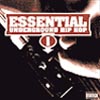 I've never hid my true feelings about "underground" rap music in myreviews. Whether I'm muttering about the lackluster Def Jux family,discrediting the Anti-Pop Consortium, or setting The Streets ablaze, Ishow love to the street-level lyricists who represent properly asopposed to digging through their backpacks for their thesauruses. Yes,I know that artists like Run DMC and Grandmaster Flash built rap music,but so did NWA and the Geto Boys. So when I spotted this budgetsampler, I was inititally skeptical until I scanned the roster: no DefJux names in sight. Released on indie Landspeed Records label, thislengthy compilation packs 19 tracks full of the diversity of theunderground, from hustlers and gangsters to Okayplayer heads andoldschool purists. With contributions from both well-known artists likeN.O.R.E. and 18 Cent (currently tearing up rap radio with two hitsingles from his album on Eminem's Shady Records imprint) as well asoriginators like Inspectah Deck and Big Daddy Kane, there's somethingfor everyone here. Mobb Deep brethren Infamous Mobb spit versesstraight outta Queensbridge over two trademark Alchemist produced cuts,reminding me once again that my borough rocks hardest. Speaking ofQueens, Cormega comes correct here as well, with "Built For This" fromhis latest album (which incidentally made my Top 10 List for 2002) theolder banger "Get Our Of My Way." The biggest surprises here are thehigh-quality unknowns like the Havoc-endorsed R.A. the Rugged Man.Produced by Ayatollah, "You Don't Wanna Fuck Wit" is rife with sweetbeats and pleasantly obscure references to Nabokov's infamous pervertHumbert Humbert and the road rage rich girl Lizzie Grubman. Also ofnote is Group Home, an assumedly Gang Starr-related project whose"Handle Your BI" emits serious head-nodding soul that could warm up thecoldest winter night. The overall outcome is impressive, despiteparticularly weak moments from 7L and Esoteric, Thirstin Howl III, andNon Phixion (whose tasteless rhyme about Michael J. Fox is as funny asanother Christopher Reeve joke, as just as original). Considering youcan find this CD online and in both large and independent recordretailers for around $6.00, you'd be foolish to pass up thisopportunity to get a good look at some of the best artists in theunderground today.
I've never hid my true feelings about "underground" rap music in myreviews. Whether I'm muttering about the lackluster Def Jux family,discrediting the Anti-Pop Consortium, or setting The Streets ablaze, Ishow love to the street-level lyricists who represent properly asopposed to digging through their backpacks for their thesauruses. Yes,I know that artists like Run DMC and Grandmaster Flash built rap music,but so did NWA and the Geto Boys. So when I spotted this budgetsampler, I was inititally skeptical until I scanned the roster: no DefJux names in sight. Released on indie Landspeed Records label, thislengthy compilation packs 19 tracks full of the diversity of theunderground, from hustlers and gangsters to Okayplayer heads andoldschool purists. With contributions from both well-known artists likeN.O.R.E. and 18 Cent (currently tearing up rap radio with two hitsingles from his album on Eminem's Shady Records imprint) as well asoriginators like Inspectah Deck and Big Daddy Kane, there's somethingfor everyone here. Mobb Deep brethren Infamous Mobb spit versesstraight outta Queensbridge over two trademark Alchemist produced cuts,reminding me once again that my borough rocks hardest. Speaking ofQueens, Cormega comes correct here as well, with "Built For This" fromhis latest album (which incidentally made my Top 10 List for 2002) theolder banger "Get Our Of My Way." The biggest surprises here are thehigh-quality unknowns like the Havoc-endorsed R.A. the Rugged Man.Produced by Ayatollah, "You Don't Wanna Fuck Wit" is rife with sweetbeats and pleasantly obscure references to Nabokov's infamous pervertHumbert Humbert and the road rage rich girl Lizzie Grubman. Also ofnote is Group Home, an assumedly Gang Starr-related project whose"Handle Your BI" emits serious head-nodding soul that could warm up thecoldest winter night. The overall outcome is impressive, despiteparticularly weak moments from 7L and Esoteric, Thirstin Howl III, andNon Phixion (whose tasteless rhyme about Michael J. Fox is as funny asanother Christopher Reeve joke, as just as original). Considering youcan find this CD online and in both large and independent recordretailers for around $6.00, you'd be foolish to pass up thisopportunity to get a good look at some of the best artists in theunderground today.- Cormega - Get Out of My Way
- Infamous Mobb - Mobb Niggaz
- 18 Cent - U Not Like Me
 Tigersmilk is free jazz improvisation by Rob Mazurek playing cornet andelectronics, Jason Roebke on bass and Dylan van der Schyff on drums."Free jazz" is a genre every bit as conservative as any in that mostconservative of musical realms: jazz. It has its standardizedtechniques, stock gestures and established styles and this CD is sodeeply into the manipulation of these familiar symbols that I wonder ifthe intent is post modern. Roebke and van der Schyff are both verycapable and skilled in such manipulations. Indeed Roebke boasts amasters degree in improvisation, a training that, judging by thisdocument, included almost all the elementary avant-garde bass playingtechniques that I loathe (the ugly-bowed harmonics, out of tune doublestopped chords, muted pizzicato, etc,...). When Roebke gets going inthe accompaniment role, the competent result is the Gary Peacock stylethat unlimited numbers of bass players apparently never tire ofimitating. An accompanying blurb quotes Jazz Times as comparing van derSchyff to Oxley and Lovens. This is informative only up to the pointthat van der Schyff can clatter around the kit in a fairly frenetic anddisconnected way like those Europeans do, but beyond that thecomparison is misleading. Firstly, he clearly sounds like a jazzer andsecondly, he is a sympathetic and supportive drummer rather thanleading the process by constantly challenging it. (Basically the quotemeans that van der Schyff can imitate the Lovens sound fairlyaccurately, which is true.) The contrast in musicianship betweenMazurek and the others on this CD could hardly be starker, and yetagain, what should be the last resort of stylistic imitation is in factthe first. Loud raspy trills and split-notes in familiar suddendisjointed gestures are offered up as a version of avant-gardeexpressionism. All in all, it's hard for me to imagine how anyone canreally get excited by playing all these tired old ideas again andagain, which is maybe why Tigersmilk sounds as though the players arealready bored by the whole thing.
Tigersmilk is free jazz improvisation by Rob Mazurek playing cornet andelectronics, Jason Roebke on bass and Dylan van der Schyff on drums."Free jazz" is a genre every bit as conservative as any in that mostconservative of musical realms: jazz. It has its standardizedtechniques, stock gestures and established styles and this CD is sodeeply into the manipulation of these familiar symbols that I wonder ifthe intent is post modern. Roebke and van der Schyff are both verycapable and skilled in such manipulations. Indeed Roebke boasts amasters degree in improvisation, a training that, judging by thisdocument, included almost all the elementary avant-garde bass playingtechniques that I loathe (the ugly-bowed harmonics, out of tune doublestopped chords, muted pizzicato, etc,...). When Roebke gets going inthe accompaniment role, the competent result is the Gary Peacock stylethat unlimited numbers of bass players apparently never tire ofimitating. An accompanying blurb quotes Jazz Times as comparing van derSchyff to Oxley and Lovens. This is informative only up to the pointthat van der Schyff can clatter around the kit in a fairly frenetic anddisconnected way like those Europeans do, but beyond that thecomparison is misleading. Firstly, he clearly sounds like a jazzer andsecondly, he is a sympathetic and supportive drummer rather thanleading the process by constantly challenging it. (Basically the quotemeans that van der Schyff can imitate the Lovens sound fairlyaccurately, which is true.) The contrast in musicianship betweenMazurek and the others on this CD could hardly be starker, and yetagain, what should be the last resort of stylistic imitation is in factthe first. Loud raspy trills and split-notes in familiar suddendisjointed gestures are offered up as a version of avant-gardeexpressionism. All in all, it's hard for me to imagine how anyone canreally get excited by playing all these tired old ideas again andagain, which is maybe why Tigersmilk sounds as though the players arealready bored by the whole thing.  The defining moment of an album is frequently its closer. It's the last chance to make a lasting impression on the listener that can turn a good album into a timeless classic. Looking back on the 1990s, 'Millions Now Living Will Never Die' ended with the lasting impression of "Along the Banks of Rivers," a tune which differed so much from the others on that record but was strong enough to leave many breathless. Without that unpredictable variety and solid strength that came with the borderline out-of-place "Banks," it's almost unsurprising that when asked about Tortoise, their subsequent albums, 'TNT' and 'Standards' rarely are mentioned as being as globally important.
The defining moment of an album is frequently its closer. It's the last chance to make a lasting impression on the listener that can turn a good album into a timeless classic. Looking back on the 1990s, 'Millions Now Living Will Never Die' ended with the lasting impression of "Along the Banks of Rivers," a tune which differed so much from the others on that record but was strong enough to leave many breathless. Without that unpredictable variety and solid strength that came with the borderline out-of-place "Banks," it's almost unsurprising that when asked about Tortoise, their subsequent albums, 'TNT' and 'Standards' rarely are mentioned as being as globally important.
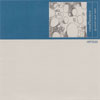 Intransitive Recordings has released one in a pair of discs by JohnGrznich and Seth Nehil that explores their prolonged colaboration ofthe last several years. 'Confluence' opens with an extended, airy droneand a slight whisper that leads into a repeated clanking rhythm thatgrows until another, deeper drone can supplant the first. Slowly,microorganisms made purely of sound begin to swell and collide as theopening piece, titled "Pneuma" in a vaguely scientific artspeak createsa self-sustaining colony of sounds as beings. Of course, thesound-organisms don't have to abide by the physical laws and socialrules that real beings would, and so the analogy ends there. ButGrznich and Nehil have set out to create organic sound systems with'Confluence' and the differentiation between an organic system and asymbol of one is important. The prose that fills the liner notes iscoldly detached as it describes processes, and experiments more thansounds and feelings. Of course, not all music is set to resonate on anemotional level, and "Pneuma" is a good example of that. You can findthe structures, observe the growth and be completely involved inlistening to the system, but it's not likely to affect you in apersonal, emotional way unless you are normally moved by the kind ofrigidly scientific approach to the world that this track seems toentail. "The Distant Edge," however, treads a very different terrainthat is full of voices and the aural signifiers of human activity. Theatonal choral drone that builds with the agitated activity of a beehiveis reminiscent of the György Ligeti themes in 2001, and is accompaniedby location recordings of crowd noise and honking car horns that evokethe confusion and dissonance of a demonstration in Belgrade. Thealbum's closer, "Lohme" is a fluttering, cyclic drone workout that seesa sonic system in stasis, wrapping around itself in a pulsatingwhitewash. "Lohme" lacks the tension of "The Distant Edge" and theclinical precision of "Pneuma," but works on it's own as a worthy forayinto musical structures that take an almost extreme amount of patienceand time to digest. From the pen and ink drawing on the cover to thelast fading tones of recorded tones, 'Confluence' is an observablesonic petri dish. Just like looking through a microscope at amorphousshapes colliding in the protoplasm, approaching this record can bedifficult and rewarding depending on what you expect to find.
Intransitive Recordings has released one in a pair of discs by JohnGrznich and Seth Nehil that explores their prolonged colaboration ofthe last several years. 'Confluence' opens with an extended, airy droneand a slight whisper that leads into a repeated clanking rhythm thatgrows until another, deeper drone can supplant the first. Slowly,microorganisms made purely of sound begin to swell and collide as theopening piece, titled "Pneuma" in a vaguely scientific artspeak createsa self-sustaining colony of sounds as beings. Of course, thesound-organisms don't have to abide by the physical laws and socialrules that real beings would, and so the analogy ends there. ButGrznich and Nehil have set out to create organic sound systems with'Confluence' and the differentiation between an organic system and asymbol of one is important. The prose that fills the liner notes iscoldly detached as it describes processes, and experiments more thansounds and feelings. Of course, not all music is set to resonate on anemotional level, and "Pneuma" is a good example of that. You can findthe structures, observe the growth and be completely involved inlistening to the system, but it's not likely to affect you in apersonal, emotional way unless you are normally moved by the kind ofrigidly scientific approach to the world that this track seems toentail. "The Distant Edge," however, treads a very different terrainthat is full of voices and the aural signifiers of human activity. Theatonal choral drone that builds with the agitated activity of a beehiveis reminiscent of the György Ligeti themes in 2001, and is accompaniedby location recordings of crowd noise and honking car horns that evokethe confusion and dissonance of a demonstration in Belgrade. Thealbum's closer, "Lohme" is a fluttering, cyclic drone workout that seesa sonic system in stasis, wrapping around itself in a pulsatingwhitewash. "Lohme" lacks the tension of "The Distant Edge" and theclinical precision of "Pneuma," but works on it's own as a worthy forayinto musical structures that take an almost extreme amount of patienceand time to digest. From the pen and ink drawing on the cover to thelast fading tones of recorded tones, 'Confluence' is an observablesonic petri dish. Just like looking through a microscope at amorphousshapes colliding in the protoplasm, approaching this record can bedifficult and rewarding depending on what you expect to find. Stray Light are the Manchester (UK) band I've enjoyed most in recentyears. After seeing their earliest gigs I invited them to support BardoPond and Stars of the Lid when I put on gigs for those bands. Theirdebt to Sonic Youth has always been apparent, but they play up a moremannered and thoughtful side of that influence than most detunedrockists. When they first started gigging around Manchester amongst asea of turgid Oasis clones they stood out a mile. Stray Light are allabout slowburning intertwined guitar melodies, bolstered by sweetviolin drone and skittering drums. 'Careers' consists mostly of finelywrought instrumentals which gleam elegantly, but it's a shame Kat Moordoesn't sing a little more as she can bring a heartfelt longing to hersemi-mumble singing that's quite stunning at times, and her duet withbassist / violinist Ellen Poliakoff on "Sarcasm On The Move" has astrange playground nursery rhyme feel that's both cute and sinister.Vocals don't force an entry until the fourth track, "Hearing Shapes,"which brings a buried folkiness to the byre. Whilst they open the albumwith all strings blazing in the psychedelic cloud swarms of the veryappropriately titled "Haze & Your Arm," mostly guitarists Kat andDavid Bennett pick careful arpeggiated flutter, swirling around in everdeepening pools, building carefully considered sunrise momentum. Whenthey do unleash a little six string fire, its always been carefullystoked. It seems rhythmic thrust is painted in by the guitar melodies,and Dan Dunbobbin's drumming tends to punctuate. The final track"Kitty's Blues" finds Kat describing pent up rage brilliantly in asparse lyric, "Every time you shut your eyes, you burst into flames,"and the album careers to a langourous anti-climax, cutting off aheartrending yearning elegy just as it seems about to explode.'Careers' follows up the CD-R release 'Mile 7' with similar shimmeringquality, but with perhaps more obvious contribution from their newestmember Ellen, whose violin has become ever more central to their sound.You can hear tracks at the Doubtful Sound website.
Stray Light are the Manchester (UK) band I've enjoyed most in recentyears. After seeing their earliest gigs I invited them to support BardoPond and Stars of the Lid when I put on gigs for those bands. Theirdebt to Sonic Youth has always been apparent, but they play up a moremannered and thoughtful side of that influence than most detunedrockists. When they first started gigging around Manchester amongst asea of turgid Oasis clones they stood out a mile. Stray Light are allabout slowburning intertwined guitar melodies, bolstered by sweetviolin drone and skittering drums. 'Careers' consists mostly of finelywrought instrumentals which gleam elegantly, but it's a shame Kat Moordoesn't sing a little more as she can bring a heartfelt longing to hersemi-mumble singing that's quite stunning at times, and her duet withbassist / violinist Ellen Poliakoff on "Sarcasm On The Move" has astrange playground nursery rhyme feel that's both cute and sinister.Vocals don't force an entry until the fourth track, "Hearing Shapes,"which brings a buried folkiness to the byre. Whilst they open the albumwith all strings blazing in the psychedelic cloud swarms of the veryappropriately titled "Haze & Your Arm," mostly guitarists Kat andDavid Bennett pick careful arpeggiated flutter, swirling around in everdeepening pools, building carefully considered sunrise momentum. Whenthey do unleash a little six string fire, its always been carefullystoked. It seems rhythmic thrust is painted in by the guitar melodies,and Dan Dunbobbin's drumming tends to punctuate. The final track"Kitty's Blues" finds Kat describing pent up rage brilliantly in asparse lyric, "Every time you shut your eyes, you burst into flames,"and the album careers to a langourous anti-climax, cutting off aheartrending yearning elegy just as it seems about to explode.'Careers' follows up the CD-R release 'Mile 7' with similar shimmeringquality, but with perhaps more obvious contribution from their newestmember Ellen, whose violin has become ever more central to their sound.You can hear tracks at the Doubtful Sound website. 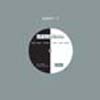 Swim releases are always worth a shot, so after being a bit surprised that Colin Newman was releasing a single by a band who sounded on the surface to be some kind of reversion to punk rock '77, I decided to try it anyway and see if it didn't grow in. This was a good idea, as I'd heard compressed radio broadcasts of Rhodes prior to hearing the single, and some of the raw powerhouse energy had been shorn away.
Swim releases are always worth a shot, so after being a bit surprised that Colin Newman was releasing a single by a band who sounded on the surface to be some kind of reversion to punk rock '77, I decided to try it anyway and see if it didn't grow in. This was a good idea, as I'd heard compressed radio broadcasts of Rhodes prior to hearing the single, and some of the raw powerhouse energy had been shorn away.
 Originally self-released as a five-song EP in 2001, Kid Dakota's expanded version (his debut full-length) arrives with three new tracks on Low's Chairkickers Union Music. (Low's own Zak Sally even joins the Minneapolis duo on bass on several tracks.) For a two-man outfit—Christopher McGuire on percussion and Darren Johnson contributing vocals, guitar, and all other instruments—Kid Dakota is electric. Jackson's songwriting and unvarnished angst break forth with surprising ferocity given that most of his songs feature two- (or three- or four-) part vocal harmonies and languorous guitar solos.
Originally self-released as a five-song EP in 2001, Kid Dakota's expanded version (his debut full-length) arrives with three new tracks on Low's Chairkickers Union Music. (Low's own Zak Sally even joins the Minneapolis duo on bass on several tracks.) For a two-man outfit—Christopher McGuire on percussion and Darren Johnson contributing vocals, guitar, and all other instruments—Kid Dakota is electric. Jackson's songwriting and unvarnished angst break forth with surprising ferocity given that most of his songs feature two- (or three- or four-) part vocal harmonies and languorous guitar solos.
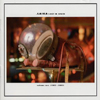 Only very few of my fave bands can usher me in a trance-like state tocompletely different worlds like Laika. After ten years of recording assuch, their first compilation has surfaced—collecting a number offavorites, rarities and unreleased things. While theobsessive/compulsive nitpicky side of me starts screaming bloody murderlooking for other rare omitted or forgotten tunes, the calm/collectedside of me is very thankful this came out. Thinking back to 1993, itwas obvious from the first Moonshake recordings that their strengthswere in the bass, female vocals and killer production. After releasingthe 'Eva Luna' LP and a couple EPs, the bassist, female singer andproducer broke free from Moonshake. (Unsurprisingly Moonshake's qualitysharply went downhill.) Guitarist/vocalist Margaret Fiedler, amid-westerner living in London and producer Guy Fixsen formed Laikawith other Moonshake alum, John Frenett on bass guitar. The debutalbum, 'Silver Apples of the Moon' surfaced in 1995 and further pushedthe best ideas put forth on 'Eva Luna,' deftly crashing the sounds ofadventurous rock and rhythmic mayhem. The dangerously catchy tunes weresaturated in electronic and organic percussion, whimsical loops,intoxicating repetitious bass guitar riffs and unoffensive vocals. Iremember seeing Tricky open for Laika on this tour and was simply wowedby their deceptive simplicity. Frenett departed, Rob Ellis joined andtheir second album, 'Sounds of the Satellites' came out in 1997. WithRob's departure, Laika became more clearly defined a duo between Guyand Margaret. 'Good Looking Blues,' released in 2000, was easily one ofmy faves of the year: their instrumentation became less and lesssaturated while the feel became more and more galactic. (Sometimes it'samazing how the simplest of instrumentations can create the mostcompelling songs.) All three albums are represented by some of theirband-picked highlights, while the bonus material includes non-albumtracks like "Lower Than Stars," originally recorded for a Volume comp,the brand new song, "Beestinger," three Peel Session recordings, theircover of Wire's "German Shepherds," and a couple remixes including JackDangers' epic 9+ minute extension of "Looking for the Jackalope."Originally recorded for the Red Hot compilaiton, 'Off-Beat,'"Jackalope" is one of my fave Dangers remixes, rhythmically laden withwhat sounds like baby rattles and entertaining samples of psychedelicnumerologists. Furthermore, an accompanying booklet has really coolstories and factual tidbits. For example: did you know singer/guitaristMargaret Fiedler has done more Peel Sessions for more bands than anyother woman? (This is due to her performances with Laika, Moonshake, PJHarvey and God is My Co-Pilot.) 'Lost in Space' is a two-disc set andis graciously priced only as a single and is worth every minute.
Only very few of my fave bands can usher me in a trance-like state tocompletely different worlds like Laika. After ten years of recording assuch, their first compilation has surfaced—collecting a number offavorites, rarities and unreleased things. While theobsessive/compulsive nitpicky side of me starts screaming bloody murderlooking for other rare omitted or forgotten tunes, the calm/collectedside of me is very thankful this came out. Thinking back to 1993, itwas obvious from the first Moonshake recordings that their strengthswere in the bass, female vocals and killer production. After releasingthe 'Eva Luna' LP and a couple EPs, the bassist, female singer andproducer broke free from Moonshake. (Unsurprisingly Moonshake's qualitysharply went downhill.) Guitarist/vocalist Margaret Fiedler, amid-westerner living in London and producer Guy Fixsen formed Laikawith other Moonshake alum, John Frenett on bass guitar. The debutalbum, 'Silver Apples of the Moon' surfaced in 1995 and further pushedthe best ideas put forth on 'Eva Luna,' deftly crashing the sounds ofadventurous rock and rhythmic mayhem. The dangerously catchy tunes weresaturated in electronic and organic percussion, whimsical loops,intoxicating repetitious bass guitar riffs and unoffensive vocals. Iremember seeing Tricky open for Laika on this tour and was simply wowedby their deceptive simplicity. Frenett departed, Rob Ellis joined andtheir second album, 'Sounds of the Satellites' came out in 1997. WithRob's departure, Laika became more clearly defined a duo between Guyand Margaret. 'Good Looking Blues,' released in 2000, was easily one ofmy faves of the year: their instrumentation became less and lesssaturated while the feel became more and more galactic. (Sometimes it'samazing how the simplest of instrumentations can create the mostcompelling songs.) All three albums are represented by some of theirband-picked highlights, while the bonus material includes non-albumtracks like "Lower Than Stars," originally recorded for a Volume comp,the brand new song, "Beestinger," three Peel Session recordings, theircover of Wire's "German Shepherds," and a couple remixes including JackDangers' epic 9+ minute extension of "Looking for the Jackalope."Originally recorded for the Red Hot compilaiton, 'Off-Beat,'"Jackalope" is one of my fave Dangers remixes, rhythmically laden withwhat sounds like baby rattles and entertaining samples of psychedelicnumerologists. Furthermore, an accompanying booklet has really coolstories and factual tidbits. For example: did you know singer/guitaristMargaret Fiedler has done more Peel Sessions for more bands than anyother woman? (This is due to her performances with Laika, Moonshake, PJHarvey and God is My Co-Pilot.) 'Lost in Space' is a two-disc set andis graciously priced only as a single and is worth every minute. Will Oldham's third full-length release as Bonnie 'Prince' Billycontinues to develop the intimate, personal songwriting he's known for.The sparse, haunting tone of 'I See a Darkness' has given way to a muchwarmer, lush feel that began to emerge on 'Ease on Down the Road.'Billy's acoustic guitar is the center of the sound, and it comes acrosssoft, clear and resonant against his reedy voice. The album's opener"The Way" shows that in spite of the more comfortable musical feel ofthe album, Billy is still not content, with its opening line "Wintercomes and snow / I can't marry you, you know" and its string-backedchorus, "Love me the way I love you." The broken romance dominates thealbum. Bonnie Billy can be imagined sitting by a fire in a tiny woodencottage in some Southern backwater, rehashing the heartache and penningbitter lyrics like "Constancy and love is a joke / I'm not afraid ofmeeting you / I'm fickle and I brag about it / neither will I cry foryou." Perhaps the most stunning song is "Wolf Among Wolves" where Billymost closely approaches his past 'Darkness' ghostliness. In betweenoccasional ambient gusts, Billy intones, "Why can't I be loved as whatI am? / A wolf among wolves and not as a man / among men." At times,the album can drag, particularly with the repetitive chorus of "Joy andJubilee," but for the most part, Oldham's words and arraignments areenough to keep you interested. "Master and Everyone" fleshes outOldham's melancholy songwriting with the addition of female backupvocals and instrumentation like strings, winds, and accordion. Mostimportantly, they are not used needlessly or overbearingly, butsparingly and sound like a perfect fit for the quiet, folky atmosphere.Oldham has a knack for crafting soulful, emotional songs and 'Masterand Everyone' demonstrates that he's only getting stronger. -
Will Oldham's third full-length release as Bonnie 'Prince' Billycontinues to develop the intimate, personal songwriting he's known for.The sparse, haunting tone of 'I See a Darkness' has given way to a muchwarmer, lush feel that began to emerge on 'Ease on Down the Road.'Billy's acoustic guitar is the center of the sound, and it comes acrosssoft, clear and resonant against his reedy voice. The album's opener"The Way" shows that in spite of the more comfortable musical feel ofthe album, Billy is still not content, with its opening line "Wintercomes and snow / I can't marry you, you know" and its string-backedchorus, "Love me the way I love you." The broken romance dominates thealbum. Bonnie Billy can be imagined sitting by a fire in a tiny woodencottage in some Southern backwater, rehashing the heartache and penningbitter lyrics like "Constancy and love is a joke / I'm not afraid ofmeeting you / I'm fickle and I brag about it / neither will I cry foryou." Perhaps the most stunning song is "Wolf Among Wolves" where Billymost closely approaches his past 'Darkness' ghostliness. In betweenoccasional ambient gusts, Billy intones, "Why can't I be loved as whatI am? / A wolf among wolves and not as a man / among men." At times,the album can drag, particularly with the repetitive chorus of "Joy andJubilee," but for the most part, Oldham's words and arraignments areenough to keep you interested. "Master and Everyone" fleshes outOldham's melancholy songwriting with the addition of female backupvocals and instrumentation like strings, winds, and accordion. Mostimportantly, they are not used needlessly or overbearingly, butsparingly and sound like a perfect fit for the quiet, folky atmosphere.Oldham has a knack for crafting soulful, emotional songs and 'Masterand Everyone' demonstrates that he's only getting stronger. -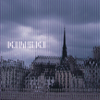 I'm now in my third year of hosting a regular "rock" show on a collegeradio station (I've been hosting various other experimental andnon-thematic shows since 1986 mind you), and I have been finding myselfincreasingly disgruntled with the current trends of "rock" music. Itseems that the best songwriters in bands who employ theguitar/bass/drums format play both very slowly and timidly, while theupbeat, more energetic stuff is mostly sloppy, painfully derivative,poorly written, or too damned wimpy. While an increasing amount ofnoisy, more experimental rock is feverishly exciting, none of it reallyfits in to the first radio show of the morning—the "morningdrive"—where I can provide a viable alternative to mall-rock and talkradio on the rest of the dial without getting too abrasive, weird ordepressing. Bearing that in mind, it is no wonder that I find Kinski'sthird album (their Sub Pop debut) a long overdue, much needed,refreshing break from the mundane. Nearly all of the songs areinstrumental, most stretch close to or over the ten minute mark, andall are fully developed with multiple movements and incorporateinfluences from a number of styles. It starts with the hum of a tone,and then another and another, patiently layering on top of each otheruntil the first guitar comes in, and just when the song appears to havereached its identity, BANG!, the -real- meat kicks in. Get used tobeing surprised. While this Seattle quartet has been seen spending timewith hippies and dronesters, thanks to performances at Terrastock andconcerts with other strange attractors, their sound is neitherintrospective nor headphonic, climaxing with enough noise to please theinner child and a rhythm strong and solid enough to get the wallsshaking to the beat. At times, there's a distorted wall of blurryguitar sound but nobody's gazing at their shoes. After the first twoinstrumental songs, bassist Lucy Atkinson takes to the microphone, withthe fast-paced, aggressive "Rhode Island Freakout," which could easilymake any Pixies fan cream their jeans. Add that to the echo-ladenopening/white noise distortion ending of the following "Schedule forUsing Pillows & Beanbags," the blissful drum-less gem, "I Think IBlew It," and the sitar-esque guitar sounds on "Your Lights Are (OutOr) Burning Badly," and Kinksi are clearly far from being a one-trickpony or easily classifiable. This album is gratifying enough with onlyeight songs that total nearly an hour. Remember their name: no doubt itwill be dropped much more in the coming years.
I'm now in my third year of hosting a regular "rock" show on a collegeradio station (I've been hosting various other experimental andnon-thematic shows since 1986 mind you), and I have been finding myselfincreasingly disgruntled with the current trends of "rock" music. Itseems that the best songwriters in bands who employ theguitar/bass/drums format play both very slowly and timidly, while theupbeat, more energetic stuff is mostly sloppy, painfully derivative,poorly written, or too damned wimpy. While an increasing amount ofnoisy, more experimental rock is feverishly exciting, none of it reallyfits in to the first radio show of the morning—the "morningdrive"—where I can provide a viable alternative to mall-rock and talkradio on the rest of the dial without getting too abrasive, weird ordepressing. Bearing that in mind, it is no wonder that I find Kinski'sthird album (their Sub Pop debut) a long overdue, much needed,refreshing break from the mundane. Nearly all of the songs areinstrumental, most stretch close to or over the ten minute mark, andall are fully developed with multiple movements and incorporateinfluences from a number of styles. It starts with the hum of a tone,and then another and another, patiently layering on top of each otheruntil the first guitar comes in, and just when the song appears to havereached its identity, BANG!, the -real- meat kicks in. Get used tobeing surprised. While this Seattle quartet has been seen spending timewith hippies and dronesters, thanks to performances at Terrastock andconcerts with other strange attractors, their sound is neitherintrospective nor headphonic, climaxing with enough noise to please theinner child and a rhythm strong and solid enough to get the wallsshaking to the beat. At times, there's a distorted wall of blurryguitar sound but nobody's gazing at their shoes. After the first twoinstrumental songs, bassist Lucy Atkinson takes to the microphone, withthe fast-paced, aggressive "Rhode Island Freakout," which could easilymake any Pixies fan cream their jeans. Add that to the echo-ladenopening/white noise distortion ending of the following "Schedule forUsing Pillows & Beanbags," the blissful drum-less gem, "I Think IBlew It," and the sitar-esque guitar sounds on "Your Lights Are (OutOr) Burning Badly," and Kinksi are clearly far from being a one-trickpony or easily classifiable. This album is gratifying enough with onlyeight songs that total nearly an hour. Remember their name: no doubt itwill be dropped much more in the coming years. Admittedly, I do buy my share of soft, white, fluffy stuff. It's calledtoilet paper. While the duo of Nick Franglen and Fred Deakin haveproven themselves to be fantastic producers, none of the songs on theirfirst proper album seem to go anywhere. At times, the instrumentationcan be impressive and well-balanced, but other times it can be klutzyand oversaturated. In all examples, however, the melodies simply don'tchange for the nearly eight minutes of each track. What works is whencrystalline acoustic guitar riffs, piano melodies, and string soundsare finley matched with subtle breaks. This trend is established fromthe first few seconds of the album and thankfully continues for most ofthe first part of the disc. However, quite often the songs becomeburied in too many layers, consisting of the painfully British sound ofmuted brass instruments, tacky scratches and irritating vocal samples.For example: while the flute and bass guitar on "Ramblin' Man" arebecoming blissfully intoxicating, the obnoxious British twit listingoff cities forces me to hit the "next" button on the CD player. Matchthat with the obvious American influenced sounds of pedal steel guitarand harmonica and it's almost as if Lemon Jelly are suffering from anidentity crisis. Ironically, and this is in their favor, each song doeshave a clear identity and I never get the feeling that I've listened tothe same song eight times. I admit the guilt of having, "All the Ducksare Swimming in the Water" running in my head over and over again, andthe black-and-white horror film score feel of "Experiement No. 6" isfun too, but oversaturating a song with instruments and not changingthe melody doesn't change make for a listen worthy of repeating.
Admittedly, I do buy my share of soft, white, fluffy stuff. It's calledtoilet paper. While the duo of Nick Franglen and Fred Deakin haveproven themselves to be fantastic producers, none of the songs on theirfirst proper album seem to go anywhere. At times, the instrumentationcan be impressive and well-balanced, but other times it can be klutzyand oversaturated. In all examples, however, the melodies simply don'tchange for the nearly eight minutes of each track. What works is whencrystalline acoustic guitar riffs, piano melodies, and string soundsare finley matched with subtle breaks. This trend is established fromthe first few seconds of the album and thankfully continues for most ofthe first part of the disc. However, quite often the songs becomeburied in too many layers, consisting of the painfully British sound ofmuted brass instruments, tacky scratches and irritating vocal samples.For example: while the flute and bass guitar on "Ramblin' Man" arebecoming blissfully intoxicating, the obnoxious British twit listingoff cities forces me to hit the "next" button on the CD player. Matchthat with the obvious American influenced sounds of pedal steel guitarand harmonica and it's almost as if Lemon Jelly are suffering from anidentity crisis. Ironically, and this is in their favor, each song doeshave a clear identity and I never get the feeling that I've listened tothe same song eight times. I admit the guilt of having, "All the Ducksare Swimming in the Water" running in my head over and over again, andthe black-and-white horror film score feel of "Experiement No. 6" isfun too, but oversaturating a song with instruments and not changingthe melody doesn't change make for a listen worthy of repeating. 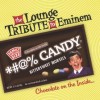 It seems like every week a new tribute album comes out where artistsfrom another genre show homage to bands that they've enjoyed or beeninfluenced by. This is not one of those albums. The Lounge Brigade, forno apparent reason other than the pure comedic value, have taken someof Eminem's more popular numbers and made them lounge. And although itseemed incredibly unlikely to me, the results are not all bad. To behonest, I'm not a big fan of Eminem, though I will admit he has animpressive delivery. The Lounge Brigade doesn't even try to keep up,and it's one of the only entertaining things about this release. On"Without Me," Tony Calzone, the band leader, tries to welcome us to theshow, and he's butted out of the way by another vocalist delivering araspy dismissal in true Marshall Mathers style. Then he flubs half ofthe lyrics or outright changes them as he clears his throat repeatedly.This is not a big band, as just four members handle keyboards, guitars,percussion, bass, and the occasional trumpet. The Brigade tries to makeup for their roster shortcomings, though, with unique arrangements."Stan," the track based on a horrible Dido song called "Thank You," isamped up into a Salsa number where the vocalists take a rest. The Didopart is replaced with horns, and piano picks up Em's lines, saving usfrom more lackluster performance by the vocalists, but that's the onlyplus. The one song where the delivery is close to the original, andtherefore something of a standout, is "My Name Is," where the vocalistcomes across like Steve Lawrence, even providing a corny "verse two"introduction. There's even an original composition called "Loungin'With Stan," but even that can't save this release from what doomed itall along. Why remake Eminem as lounge? Even if it is just for thecomedy of it, it's not that funny, and it's a one-note joke.
It seems like every week a new tribute album comes out where artistsfrom another genre show homage to bands that they've enjoyed or beeninfluenced by. This is not one of those albums. The Lounge Brigade, forno apparent reason other than the pure comedic value, have taken someof Eminem's more popular numbers and made them lounge. And although itseemed incredibly unlikely to me, the results are not all bad. To behonest, I'm not a big fan of Eminem, though I will admit he has animpressive delivery. The Lounge Brigade doesn't even try to keep up,and it's one of the only entertaining things about this release. On"Without Me," Tony Calzone, the band leader, tries to welcome us to theshow, and he's butted out of the way by another vocalist delivering araspy dismissal in true Marshall Mathers style. Then he flubs half ofthe lyrics or outright changes them as he clears his throat repeatedly.This is not a big band, as just four members handle keyboards, guitars,percussion, bass, and the occasional trumpet. The Brigade tries to makeup for their roster shortcomings, though, with unique arrangements."Stan," the track based on a horrible Dido song called "Thank You," isamped up into a Salsa number where the vocalists take a rest. The Didopart is replaced with horns, and piano picks up Em's lines, saving usfrom more lackluster performance by the vocalists, but that's the onlyplus. The one song where the delivery is close to the original, andtherefore something of a standout, is "My Name Is," where the vocalistcomes across like Steve Lawrence, even providing a corny "verse two"introduction. There's even an original composition called "Loungin'With Stan," but even that can't save this release from what doomed itall along. Why remake Eminem as lounge? Even if it is just for thecomedy of it, it's not that funny, and it's a one-note joke.  Another theme/concept record from Bip-Hop is Tonne's 'Soundtoy,' whichis effectively a product demo for a sound sequencing device that Tonnecreated as an alternative to the big budget, feature-laden audiopackages that drive modern electronic music production. The Soundtoyapplication is included on this disc for listeners to try out, and itallows the user to drag and drop colored squares that represent a bankof sixteen sounds onto a grid of twelve moving lines. Like the boardgame Othello, Soundtoy takes a minute to learn but a lifetime tomaster. The interface is intuitive and even fun to play with, but asthere is no quantization feature and no way to record your drags anddrops for playback at a later time, getting something you really wantout of it is another story. But creating whole tracks, like the eightsongs also included on this disc, does not apper to be the real aim ofSoundtoy. Instead, the artists involved primarily used the applicationto come up with new rhythmic combinations that a rigid sequencingprogram might not have helped to produce. Scanner, Si-cut.db, HakanLidbo, and Tonne himself each contribute two tracks a piece of noodlyelectronic tones drenched in reverb and delay, and after listening tothe album straight through three times in a row it was very difficultto pinpoint any one artist's signature sound or contribution. Expect alot of click n cut style percussion stabs, warm sampled bits fromanalog keyboards, and structures that flirt with the idea of beats butdon't usually manage much more than fractured, off-time rhythms. Theincluded sound files from the artists involved should keep bedroomlaptoppers busy hacking and remixing for a while, and the musicincluded, while not a necessary advancement in the world of computermusic, is fresh enough to earn a spot in the rotation at your favoritechill out spot.
Another theme/concept record from Bip-Hop is Tonne's 'Soundtoy,' whichis effectively a product demo for a sound sequencing device that Tonnecreated as an alternative to the big budget, feature-laden audiopackages that drive modern electronic music production. The Soundtoyapplication is included on this disc for listeners to try out, and itallows the user to drag and drop colored squares that represent a bankof sixteen sounds onto a grid of twelve moving lines. Like the boardgame Othello, Soundtoy takes a minute to learn but a lifetime tomaster. The interface is intuitive and even fun to play with, but asthere is no quantization feature and no way to record your drags anddrops for playback at a later time, getting something you really wantout of it is another story. But creating whole tracks, like the eightsongs also included on this disc, does not apper to be the real aim ofSoundtoy. Instead, the artists involved primarily used the applicationto come up with new rhythmic combinations that a rigid sequencingprogram might not have helped to produce. Scanner, Si-cut.db, HakanLidbo, and Tonne himself each contribute two tracks a piece of noodlyelectronic tones drenched in reverb and delay, and after listening tothe album straight through three times in a row it was very difficultto pinpoint any one artist's signature sound or contribution. Expect alot of click n cut style percussion stabs, warm sampled bits fromanalog keyboards, and structures that flirt with the idea of beats butdon't usually manage much more than fractured, off-time rhythms. Theincluded sound files from the artists involved should keep bedroomlaptoppers busy hacking and remixing for a while, and the musicincluded, while not a necessary advancement in the world of computermusic, is fresh enough to earn a spot in the rotation at your favoritechill out spot.- Scanner - Guide Me By Surprise
- Si-Cut.db - Rosalind
- Tonne - Minesou
 This disc by Scanner and Tonne is a CD version of an installation theycreated for a London-based art show at the Institute of ContemporaryArts. It expands on the original concept that used location recordingsaround London to form a sound installation by adding themed pieces fromMilan, Tokyo, Montreal, and New York City. There is so much detail inthe process that created this record, that it has raised questions forme that hinder listening to the album as a simple recording. Should Ibe interested in the process that creates the resulting sound or focuson pulling meanings solely from the experience of the recording? Wheredoes the line between spectator and creator get blurred with works thatsimply reproduce a moment in time and space for later listening? Atwhat point do we become so fascinated with aural snapshots of real-lifeevents that we spend more time listening to someone else's version of awalk through New York City than we do our own? Is this what they meanby postmodernism? I'm not sure where to go with answers on any of thosetopics, but Scanner and Tonne provide a sound collage that is true tothe title of this collection. Each track is a manipulated collection ofcommonplace sounds from familiar environments that tend to reflect, ifnot always comment on the location in question. "Tokyo" begins withfield recordings from Japanese subways and melts into a nearlytechno-ish rumble that captures the dehumanizing effects of Tokyo'smassive scale and the isolation of its millions of commuters crammedcheek to cheek into trains, but never connecting. "Montreal" findsScanner returning to his namesake with stolen cell phone conversationsand the trademark high pitched whine of radio feedback. "Milano" is amelancholic abstraction that flirts with the introduction of rhythmicfigures that are never fully realized and buries the source material ina wash of synthetic pulses. These days, an artist can take a recordingof someone ordering a pizza and turn it into a convincing 808 kick drumand bass pattern, so it's not surprising that musicians like thesechoose artificially limited sets of sound sources to see where they cantake them. But while listening to 'Sound Polaroids,' I am reminded thatthere's no substitute for experience. These recordings are distilledthrough a very specific set of personal criteria set out by the artistsand they don't sound too terribly different in tone than a lot ofScanner's other work. These recordings don't capture the life andvibrancy and complexity of the environments they are reflecting as muchas they hint at a way to compose whatever music you want with whateverset of sounds you've got.
This disc by Scanner and Tonne is a CD version of an installation theycreated for a London-based art show at the Institute of ContemporaryArts. It expands on the original concept that used location recordingsaround London to form a sound installation by adding themed pieces fromMilan, Tokyo, Montreal, and New York City. There is so much detail inthe process that created this record, that it has raised questions forme that hinder listening to the album as a simple recording. Should Ibe interested in the process that creates the resulting sound or focuson pulling meanings solely from the experience of the recording? Wheredoes the line between spectator and creator get blurred with works thatsimply reproduce a moment in time and space for later listening? Atwhat point do we become so fascinated with aural snapshots of real-lifeevents that we spend more time listening to someone else's version of awalk through New York City than we do our own? Is this what they meanby postmodernism? I'm not sure where to go with answers on any of thosetopics, but Scanner and Tonne provide a sound collage that is true tothe title of this collection. Each track is a manipulated collection ofcommonplace sounds from familiar environments that tend to reflect, ifnot always comment on the location in question. "Tokyo" begins withfield recordings from Japanese subways and melts into a nearlytechno-ish rumble that captures the dehumanizing effects of Tokyo'smassive scale and the isolation of its millions of commuters crammedcheek to cheek into trains, but never connecting. "Montreal" findsScanner returning to his namesake with stolen cell phone conversationsand the trademark high pitched whine of radio feedback. "Milano" is amelancholic abstraction that flirts with the introduction of rhythmicfigures that are never fully realized and buries the source material ina wash of synthetic pulses. These days, an artist can take a recordingof someone ordering a pizza and turn it into a convincing 808 kick drumand bass pattern, so it's not surprising that musicians like thesechoose artificially limited sets of sound sources to see where they cantake them. But while listening to 'Sound Polaroids,' I am reminded thatthere's no substitute for experience. These recordings are distilledthrough a very specific set of personal criteria set out by the artistsand they don't sound too terribly different in tone than a lot ofScanner's other work. These recordings don't capture the life andvibrancy and complexity of the environments they are reflecting as muchas they hint at a way to compose whatever music you want with whateverset of sounds you've got.  There's no denying the quality of individual tracks on this disc ofimprovised electro-acoustic music, but I am reluctant to recommend it.This is because I am really not sure what the disc actually is, or whatit is intended to be. Perhaps I should list its contents, in order ofappearance: two brief pieces by a duo called Alma Fury, who play moogand sampler. One lengthy quartet piece by Alma Fury joined by YasuhiroOtani (computer player whose appearance on the "Four Focuses" compturned my head pleasantly a few years ago) and turntablist OtomoYoshihide. Then two pieces by multi-instrumentalist Xavier Charles, ashort duo by Charles and Otomo, and two more short solo improvisationsby Charles. Now I ask you: is this a compilation? The reappearance ofOtomo on two tracks suggests that some larger framework is in place,though what that could be is unclear. So is it a group withinterchanging members, like the great "Four Focuses" CD? Maybe, butthen we never hear Charles with Alma Fury, and Otani only appears onone piece. It could be that this is a document of a single concert,which would explain the variousness of the disc's contents but, alas,such a possibility is never addressed in the package. That a date andlocation is only supplied for the quartet track implies that the otherrecordings were made at some other date and place, so my theory hasthat hole in it. Is it a meeting of Japanese and French musicians? Ifso, then why are we not presented with solo pieces by Otani and Otomo?I just can't tell what unites these pieces of sound into An Album, so Iam left to describe the music by itself.
There's no denying the quality of individual tracks on this disc ofimprovised electro-acoustic music, but I am reluctant to recommend it.This is because I am really not sure what the disc actually is, or whatit is intended to be. Perhaps I should list its contents, in order ofappearance: two brief pieces by a duo called Alma Fury, who play moogand sampler. One lengthy quartet piece by Alma Fury joined by YasuhiroOtani (computer player whose appearance on the "Four Focuses" compturned my head pleasantly a few years ago) and turntablist OtomoYoshihide. Then two pieces by multi-instrumentalist Xavier Charles, ashort duo by Charles and Otomo, and two more short solo improvisationsby Charles. Now I ask you: is this a compilation? The reappearance ofOtomo on two tracks suggests that some larger framework is in place,though what that could be is unclear. So is it a group withinterchanging members, like the great "Four Focuses" CD? Maybe, butthen we never hear Charles with Alma Fury, and Otani only appears onone piece. It could be that this is a document of a single concert,which would explain the variousness of the disc's contents but, alas,such a possibility is never addressed in the package. That a date andlocation is only supplied for the quartet track implies that the otherrecordings were made at some other date and place, so my theory hasthat hole in it. Is it a meeting of Japanese and French musicians? Ifso, then why are we not presented with solo pieces by Otani and Otomo?I just can't tell what unites these pieces of sound into An Album, so Iam left to describe the music by itself.High tones are, as the title clearly states, in fashion. Sachiko Mplays them exclusively, TV Pow employ them often, Toshimaru Nakamuraseems to live mostly in the uppermost frequency range, and on and onwith the hordes of late-comers and hangers-on. The sine tone is asobvious and self-explainatory a noise as white static, or 60-cycle hum,or feedback, and as such must be used very intentionally in order to beat all effective. Whatever their relation to each other might be, allperformances on this album use sine tones as a key element. Thankfully,all the muscians are dextrous enough improvisers and sensitive enoughlisteners to create more than a mere demonstration of a trend. AlmaFury (aka Claude Besnard and Vonick Moccoli) seems to be an especiallyexciting duo, whose pieces leap and dive gracefully among gravel growlsand piercing highs. The trio recording covers much territory in its 21minutes, and made me wonder why an entire album was not devoted to thisgroup. When it changed subject to Xavier Charles afterwards, I felt asif I had cold water thrown on me; I was just enjoying the many placesthat this quartet could take me, when suddenly they were gone, thesubject abruptly changed. Not that Charles' solo tracks are bad; theyare not, though the use of recognizable radio fragments has never beento my taste. To me, as soon as an improviser turns on a radio, puresound is brought crashing down to a reference that it cannot recoverfrom; I find myself too aware of the process and attempting to tunethat part out (no pun intended). The Charles/Otomo duo is lesssuccessful than the quartet, if only because they each seem to be doingtheir own thing at the same time, in the same room. I would have likedto hear the possiblilities of their instrumentaion explored in moredepth (could this have been a full duo CD?). The inclusion of twoadditional Charles solo pieces is fine, if (for the reasons alreadydescribed) somewhat puzzling.



